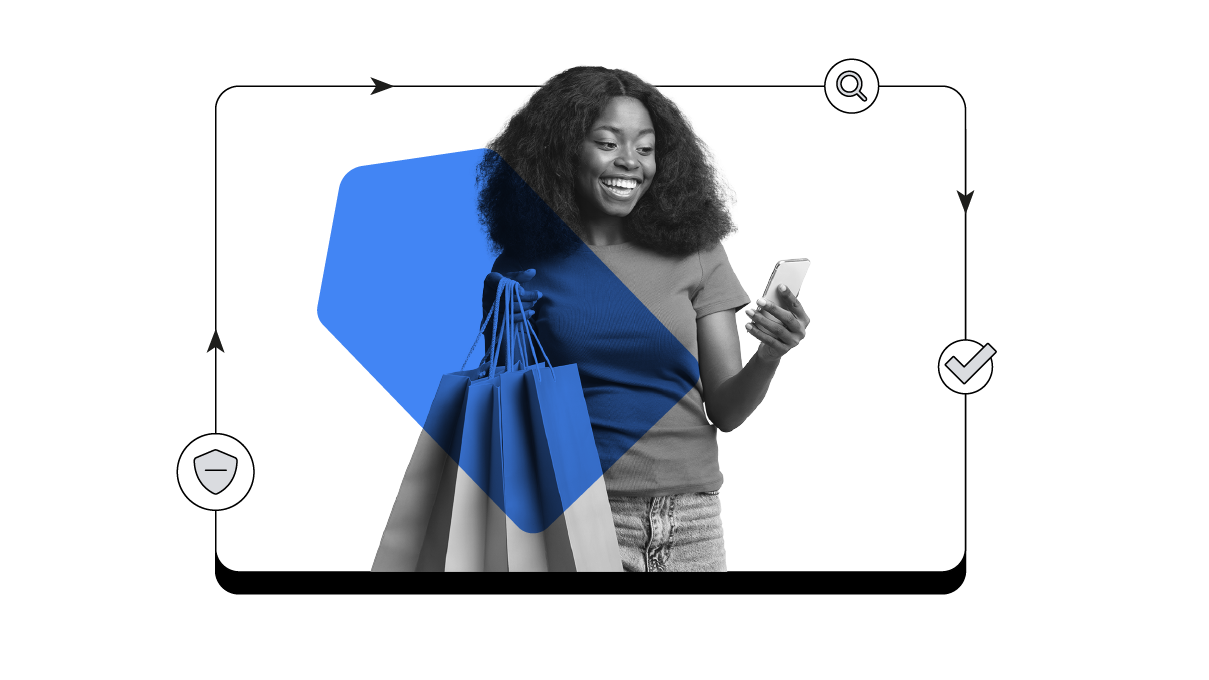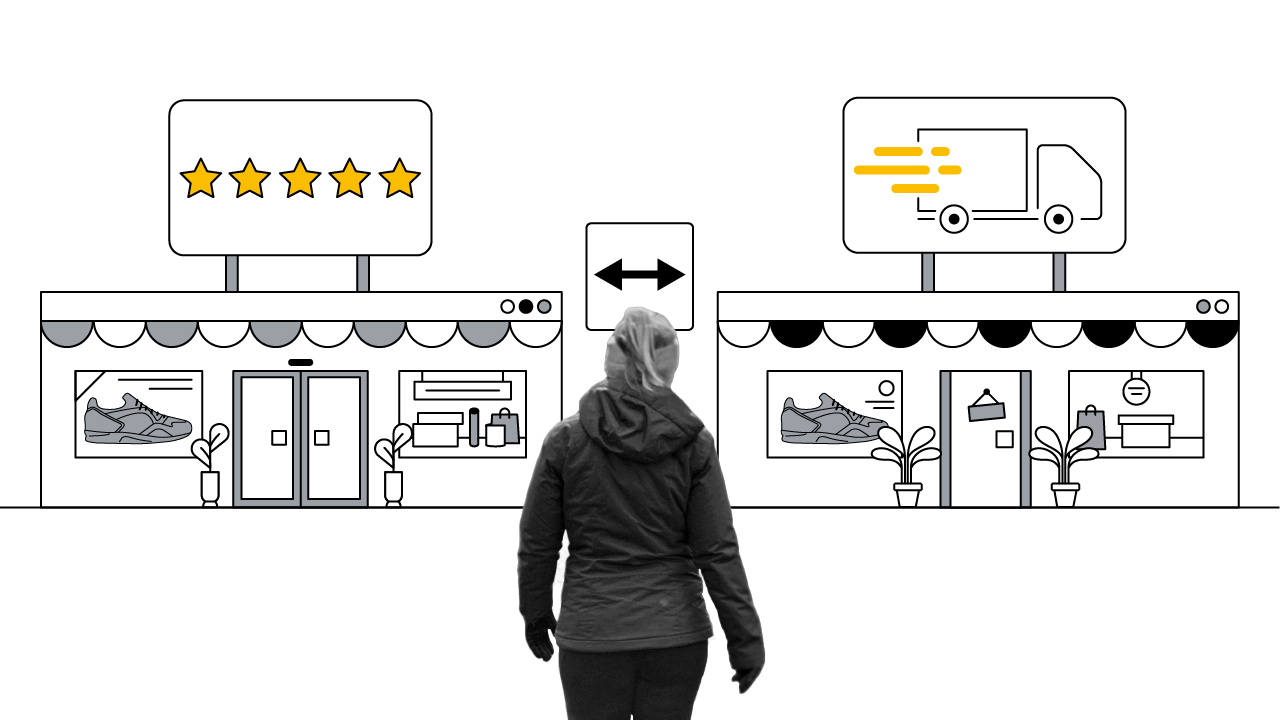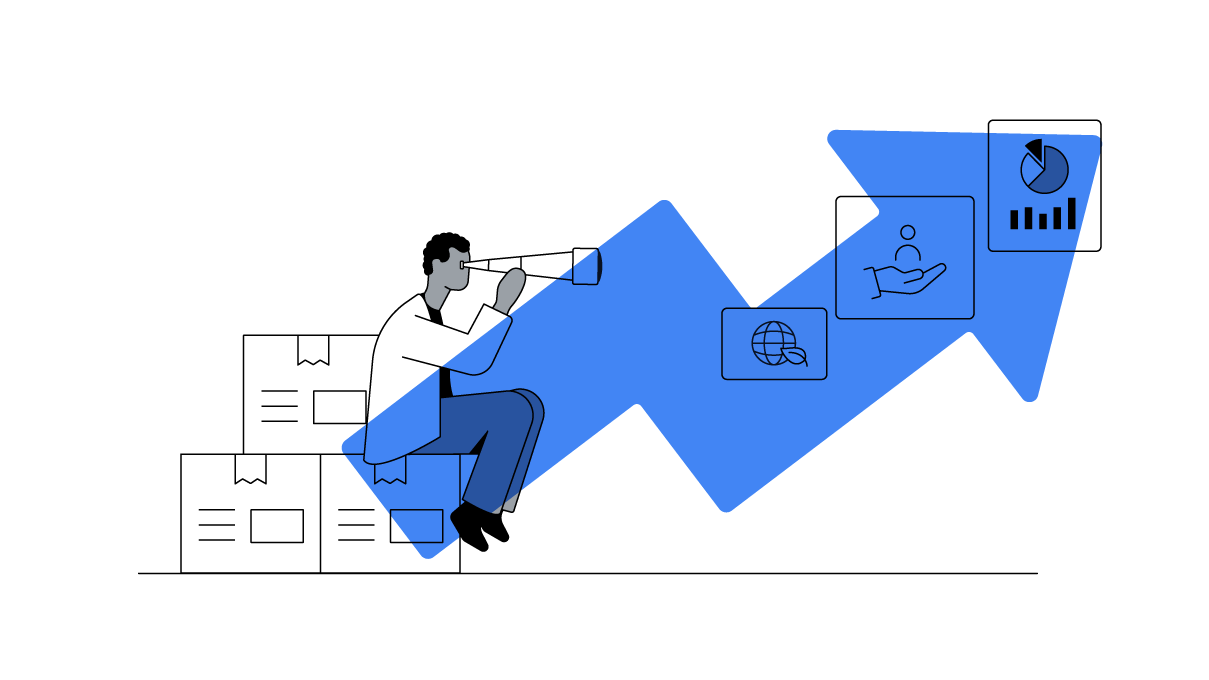There’s a lot to think about when it comes to planning your holiday campaigns, but one thing’s for certain: the role of digital in retail continues to grow. Over half (58%) of EMEA shoppers say they research online before buying to ensure they’re making the right choice1 — and 51% of their shopping time is now spent online2.
When it comes to seasonal shopping specifically, the impact of mobile is even more pronounced — with 51% of EMEA shoppers using their devices to make a purchase3.
When you combine these insights with the fact that global shoppers, on average, are shopping for 6.6 different categories (eg. fashion, consumer electronics, etc.) at any one time, it’s clear that your campaign needs to work harder than ever to make an impact.
Luckily there’s no shortage of data available that marketers can use to get a better understanding of consumers and their seasonal buying habits.

5 things we’ve learned about holiday shoppers
- Holiday shopping journeys start picking up from September and continue until well after Christmas. Bear in mind though, this can vary by product type and customer — so be sure to personalise your campaign accordingly.
- Shopper journeys at this time of year are anything but linear. Consumers use multiple offline and online channels to research, find inspiration, and ultimately decide where to buy.
- Black Friday is definitely a key seasonal moment, but it’s important you think beyond and see it as part of the wider holiday shopping journey, and not an isolated event.
- Shopper expectations are high. Almost half (43%) of EMEA shoppers think receiving promotions or deals specific to past purchases would make their shopping experience with a retailer better.4
- Last, but by no means least, 44% of global shoppers wish retailers would do a better job of sharing inventory information.5
Unwrap the opportunities
So, shopping journeys are longer, more erratic, more complex, and less anchored to specific dates. Shoppers also expect stores to be more proactive when it comes to winning their custom.
For retailers prepared to do their homework, this means plenty of new opportunities to maximise their digital presence and make it a bumper season.
One way to do that is by using Google products like Search, YouTube, and Maps. Almost three-quarters (74%) of EMEA shoppers have used a Google product6 — and they can be especially effective in shaping your campaigns, connecting with the right customers, and driving conversions.

Here are a few different approaches you could try.
1. Accelerate your business with data
Fix your attribution: Using a data-driven attribution model will ensure you’re capturing data effectively and attributing value throughout the purchase journey — not just the last place users click before buying.
Use machine learning: Make sure the bids that cause your ads to appear are based on the potential value each customer can add to your business.
- Return On Advertising Spend: Your bids are automatically optimised at auction time to achieve your desired return — helping you maximise revenue.
- Smart Shopping Campaigns: This will help your customers find your products across Search, YouTube, Gmail, and the Google Display Network — and you can optimise each one to achieve your goals. On average, advertisers see +20% conversion value, at a similar cost to standard Shopping campaigns7.
2. Connect with customers at every stage of their journey to purchase
Get smart about audiences: Using insights from Google can help you connect with shoppers at the right time, in the right way.
Reconnect throughout the journey: By re-engaging your customers, you can join up complex paths to purchase, and encourage more shoppers to buy from you.
Reach new high-value shoppers: 52% of EMEA shoppers visit multiple sites before deciding what to buy, and where to buy it from8 — and Similar Audiences can help you connect with them.
Move up the funnel: Build awareness among consumers in the discovery and research phase by using broader search queries — and running display and video ads to engage shoppers seamlessly through Search.
3. Look for new opportunities to convert
Keep the lights on: Keep budgets flexible so you’re ready to meet demand after hours and during any unforeseen seasonal spikes.
Create urgency: Try adding extensions to highlight any special seasonal offers or promotions you’re running during the holiday season.
This year’s holiday shoppers are already out in force — and they’re a curious, demanding, and complex bunch. But with the right strategies, you can be there for them at every moment on their journey to conversion. Good luck, and remember: it’s a marathon not a sprint. So, stay alert, remain flexible, and keep on going ‘til the last pine needle drops.






